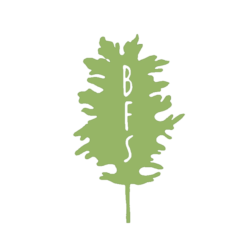By Ron Pitt
In 1897 the Vendituoli family began farming the land that is currently the Barrington Farm School. Early in the 20th century, the farm provided horse-drawn wagon delivery service offering produce, meat, and dairy products. When the elder Billy Vendituoli passed away in 2016, people in the community banded together to raise the money to purchase the land and keep it as farmland, thereby leading to the formation of the Barrington Farm School as a 501(c)(3) nonprofit in 2018.
The human history of this land stretches backward in time an incredible length. While the exact usage of our plot of land is not clear, the Rhode Island Historical Preservation and Heritage Commission (p.19) writes that Barrington had “117 farms in 1870 producing hay, rye, Indian corn, oats, potatoes, barley, onions, carrots, and strawberries.” A map from the same year shows a residence owned by a J. Burke at the corner of what is now Federal Road and Middle Highway. Agriculture was the dominant enterprise going back to 1717, when the town was established, and it is likely that our land was a field or pasture for producing grain or livestock during that time.
Go back further, and what is now Barrington is part of the Sowams Heritage Area, an expansive tract of land that was taken, legally and illegally, from the Pokanoket Tribe by the Pilgrims of Plymouth Colony over the period of 1620 – 1675. There are numerous plaques, memorials, and documents regarding this period. In addition to the Sowams Heritage Project, I would recommend Mayflower by Nathaniel Philbrick and The Name of War by Jill Lepore, a scathing account of King Philip’s War of 1675-1676 between the English settlers and Native tribes led by the Pokanoket chief sachem Metacomet, also known as Philip. On a per capita basis, this was the bloodiest war in American history, and it accelerated the horrific enslavement of Native Americans.
And before 1620? Indigenous people used highly developed agricultural methods to farm this rich and productive land for 12,000 years – going back to the last Ice Age. Consequently, it is fair to say that the land we farm has been feeding people for millennia.
It is with this in mind that we recognize our responsibility to be good stewards of the land, that the farm sits on hallowed ground, and that we are only temporary occupants. Our goal is to save this farmland for generations to come; to treat the land and the environment with utmost care; and to revere, with humility, the Indigenous Peoples who lived on and sustained this land for countless generations.



